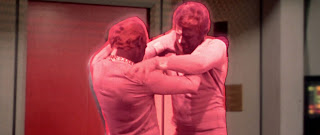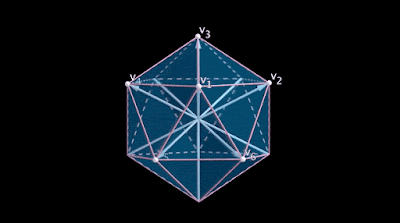The three ship escort arrived in Havari space, three weeks after we left what was left of Corva Prime. The Havari were preparing a new offensive now that the Hegemony was in disarray.
Rapacious, the Havari had chaffed under the Hegemony’s rules for the annexation of worlds. While they were barely members of the Hegemony, they were forbidden to take any planets that were part of Hegemony space. This meant they were forced to move away from the coreward worlds they preferred, and instead into the radiation-poor regions of the the edgeward planetary systems.
When the news of the Insurrection reached Havari Secundus, they mobilized for a new war. A war where they might be able to annex new territories under the cover of anarchy.
The Havari living ships were already clustered throughout the sector, their energy signatures testament to their biologically-enhanced, self-contained singularities powering their star-drives. Their fleet was one of the few not dependent on the Galactic Gate Network, they could reach most of their close neighbors in as little as three months Standard.
My job was to convince them, not that it was an error to be preparing for war, but that their target was not Corva Prime or any of the Hegemony’s core planets but the approaching alien fleet hoping to take advantage of this moment of engineered weakness.
As we dropped into Secundus’ atmosphere, our ships were reconfigured for the thick, dust-filled air. Two dozen of their winged attack insect ships flew alongside and paced us in directing us where we needed to land.
I could not make heads or tails of the sensor data at first, the land scanning systems were having difficulties determining depth and visibility was low in the upper atmosphere. It was only once we got below the cloud cover did I determine why the land-scanners had problems. It was having trouble discerning hives from mountains! The Havari hive-cities were three to five miles high arches created from the rock of the mountains themselves. They were reputed to be hand-crafted taking hundreds of years to create and perfect.
They were a symbol of power for each hive who created one, such that each was unique, yet signifying a social order and social hierarchy rarely seen in the Hegemony. These were beings who believed in order and were organized through their hive minds to bring about the order they were seeking.
The Hegemony was right to be afraid. These were this sector's apex predators. With a taste for the grand, capable of building what they needed and wanted. And when they could, they would take what they wanted from anyone unable to stop them.
The Hegemony’s destruction of Havari Prime in the First Wars of the Hegemony would not make this an easy sell. We needed them as allies because we had enough enemies.
Truth of the matter is, if we cannot convince them to join us, what’s left of the Hegemony’s Corvan leaders, in their current, devolved state, will destroy every last element of this civilization to make their borders safe making the First Galactic War little more than a border skirmish. The fate of twelve billion sentients lie in my hands.
As our ships dock, my translator activates and my Human crew prepares to disembark. Nothing prepared me for the scale of the Havari. Insectoid, they stand three meter tall. Their armored limbs and insect-like heads are shiny black and covered with sharp spines. They have both simple eyes and compound eyes surrounding their heads. Their segmented bodies are beautiful and yet terribly alien.
There is a sound, a quiet reverberation underfoot, something like the sound of crickets, like a rhythmic breathing, growing louder and then softer. The air is filled with a panoply of scents some sweet, even cloying, others bitter, carrying the rage of the Havari with them.
“I am Essver Dream-singer, of the People of the Sjurani, son of Minru, son of Daor the Terrible, warrior-poet of Harata II, Sjurani Rex, mated to the nǚgōngjué the Glorious Pielienhis, Representative of the Great and Glorious Corvan Hegemony, representing the High Council of Worlds on Toranor.” This is one of the few times I am forced to look up at my hosts. My human cousins bow as deeply as I do.
“We are Hive Harak, representing Havari Secundus and the Confederate of Larani Star-systems. We greet you in the spirit of hospitality. That no arms will be lifted against you, no poisons shall be presented in any cuisine you may partake with us, no threat or ill will shall be directed toward you while you are a member of Hive Harak. We welcome you as Hive Brothers. I am Prefect L’al.”
Before I could even answer the generous benediction, two of the Havari flying overhead, all of whom I assumed were maintenance technicians of one sort or another wheeled about and dropped directly into the center of our group. Weapons were drawn and pointed at my delegation and the House Harak group drew weapons on the two intruders.
“You do not speak for all of Havari Secundus, Prefect L’al. Leave our world aliens; know that we are coming for all of the coreward worlds we can take.” He leveled his weapon and I realized we might all need to defend ourselves in the next few seconds.
I felt it before I saw anything changing. A vibration so powerful it silenced all other sounds in the room. The Havari standing around us moved back and then prostrated themselves on the ground. The two intruders backed up but did not lower their weapons, at first. Then the vibration sounded again and a shadow appeared above my head.
I could hear the thrum of a huge set of wings and feel the backblast as the giant landed in our midst. Black and golden with fiery red highlights, she was twice the size of the warriors who already towered over us.
She landed light as a feather and her giant wingspan folded neatly beneath her carapace. The two armed intruders dropped their weapons but before they could hit the ground, both were beheaded. Their heads were simply gone. Their black blood shot into the air as their bodies toppled backward.
The Queen turned to us, and still chewing she announced, “Forgive the intrusion. Now our negotiations can begin.”
Conflagration – Saga of the Twilight Continuum © Thaddeus Howze 2014, All Rights Reserved




![Just Create IT!!!: How to Create a Graphic Novel And Film/TV Show Thru Amazon by [Love, Chris]](https://images-na.ssl-images-amazon.com/images/I/51DGB6Uw9gL.jpg)




